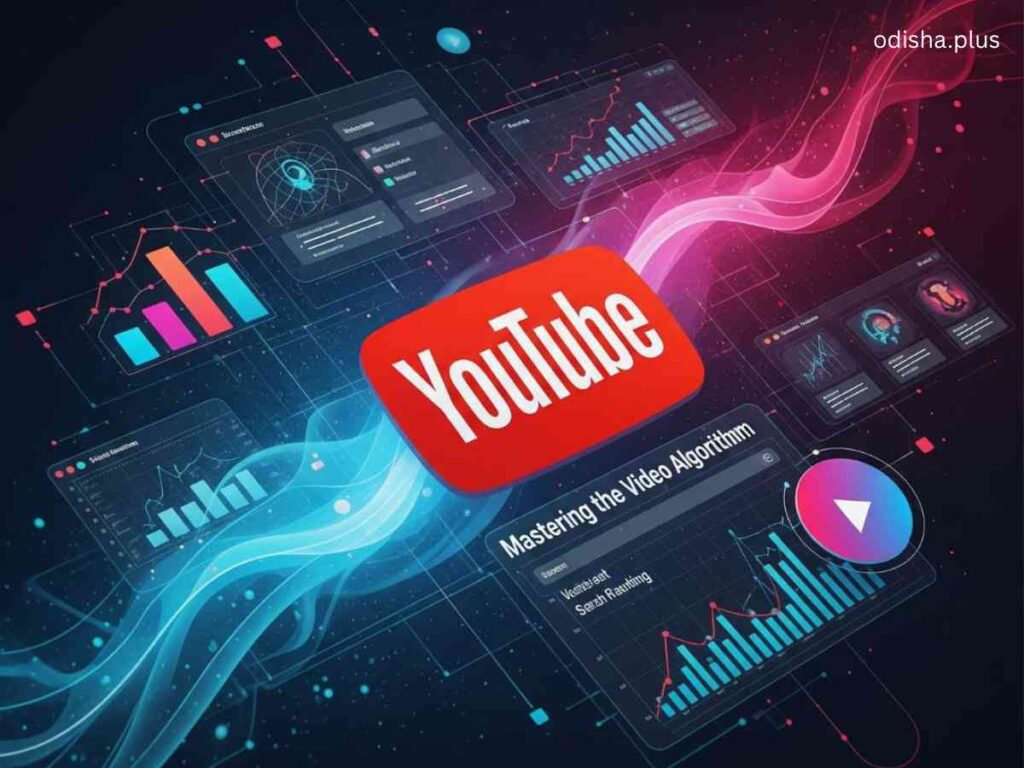OdishaPlus Bureau
With the new monetization policy, YouTube Channels that have relied on churning out dozens of templated or AI-narrated videos per day may face demonetization

YouTube is implementing significant changes to its monetization policies, effective July 15, 2025, aimed at curbing the proliferation of repetitive and low-quality, AI-generated content. The move, which has sent ripples through the global creator community, is poised to have a substantial impact on how Indian YouTubers and creators worldwide approach content creation and monetization on the platform.
The updated guidelines from the Google-owned video giant are designed to reward originality and authenticity, while penalizing channels that churn out mass-produced or templated videos with minimal human intervention. For creators in India, a country with one of the largest and most diverse YouTube audiences and creator bases, these changes signal a pivotal shift towards prioritizing high-value, creative content.
The Core of the New Policy: Authenticity Over Automation
At the heart of the new policy is a redefinition of what constitutes “repetitious” or “reused” content. YouTube is cracking down on what it deems “programmatically or artificially generated” videos that are created in bulk and offer little to no educational or narrative value. This includes, but is not limited to:
- Templated or Mass-Produced Videos: Content created from templates with minimal changes from one video to the next.
- AI-Generated Content without Significant Human Input: This includes videos where AI voices read third-party content over stock footage or slideshows of images with no original commentary or narrative.
- Low-Effort “Faceless” Channels: Channels that rely heavily on automated content generation without a distinct human presence or creative direction.
- Repetitive Content: Videos that are very similar to each other with only minor variations.
It is crucial to note that YouTube is not implementing an outright ban on AI-generated content. The platform acknowledges the role of AI as a creative tool. However, the new rules emphasize that to be eligible for monetization, content using AI must also feature substantial human creativity, such as original commentary, significant editing, a compelling narrative, or a clear educational purpose.
YouTube’s Official Stance
In a statement regarding the updated policy, YouTube clarified its intent: “We’ve seen a rise in content that is created in a way that is meant to look like it’s providing a unique viewing experience, but in reality, is just a templated or programmatic version of the same content. To maintain a healthy ecosystem for both creators and viewers, we’re updating our policies to be more explicit about what we consider to be low-quality and unoriginal content.”
Relevant YouTube Community Guidelines
These changes build upon existing YouTube Partner Program (YPP) policies, specifically the guidelines on “Reused content.” Previously, this policy was often interpreted in the context of using other people’s content. The new clarification extends this to a creator’s own content if it is deemed repetitive and lacking in originality.
The Community Guidelines also play a role, particularly those related to spam and deceptive practices. Mass-producing low-quality content can be seen as an attempt to manipulate the platform’s recommendation algorithms, which falls under prohibited practices.
The Impact on Indian and Global Creators
For India’s burgeoning creator economy, these changes will likely have a multifaceted impact:
- A Boost for Originality: Creators who invest time and effort in producing original, high-quality content—be it in regional languages or niche genres—are expected to benefit. With less competition from low-effort, spammy channels, their content may gain more visibility and a larger share of the ad revenue pool.
- A Reckoning for “Content Farms”: Channels that have relied on churning out dozens of templated or AI-narrated videos per day will face demonetization. This will force a significant strategic shift for those who have prioritized quantity over quality. Many such channels have gained traction in the Indian market by catering to a demand for quick, digestible content in various languages.
- Clarity for AI Adopters: For the growing number of Indian creators experimenting with AI tools for scripting, editing, or even generating visuals, the new guidelines provide a clearer framework. The key takeaway is that AI should be a co-pilot, not the sole pilot. Adding a human touch through voice-overs, insightful analysis, or unique creative direction will be essential for monetization.
- A Potential Rise in Quality: Viewers in India and across the globe are likely to see an improvement in the quality of content recommended to them. By disincentivizing the production of repetitive videos, YouTube aims to create a more engaging and rewarding experience for its users.
Globally, the impact will be similar, affecting a wide array of channels, from those that produce generic “top 10” listicles with robotic narration to those that generate countless variations of simple animations with different background music.
The Way Forward for Creators: A Guide
In light of these changes, here are some key takeaways for creators in India and beyond who wish to maintain or achieve monetization on YouTube:
- Prioritize Originality: Develop a unique voice, style, and perspective. Your content should be a reflection of your creativity and expertise.
- Add Significant Value: If you use third-party content or AI tools, ensure you are adding substantial value through commentary, parody, educational insights, or transformative editing.
- Be the Face (or Voice) of Your Channel: While “faceless” channels can still be successful, they must have a distinct human element. This could be a unique narration style, expert analysis, or a recognizable brand identity.
- Focus on Quality Over Quantity: The era of gaming the algorithm with a high volume of low-effort videos is coming to an end. Invest in creating content that you are proud of and that provides real value to your audience.
- Review Your Existing Content: If your channel features a significant amount of repetitive or templated content, it would be prudent to review and potentially update or remove those videos to align with the new policies.
YouTube’s new monetization framework marks a clear and decisive step towards fostering a more creative and authentic digital landscape. For the vibrant and dynamic creator community in India and around the world, the message is unequivocal: originality and human creativity are the cornerstones of success on the platform.
























